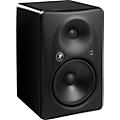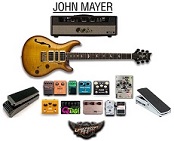Now that we know a thing or two about monitors, we need to research what is out there so we can make an informed decision on what to buy. The first thing I recommend you do is start looking around the internet for reviews. The reviews that will help you the most will be ones written by real studio people who actually test the monitors for mixing. Paying attention to the average Joe Schmo's review on a site like Guitar Center is also useful, but not the same as a good review from a proven engineer.
One thing you will want to think about is the size of your mixing room. If you are in a small room, you may be interested in getting a smaller monitor. For example, Mackie makes some really nice monitors. They make both a 6" driver version and a larger 8" driver monitor. The 6" monitor may be good for you if you are in smaller room.

Click the image of the HR824 below for more info:
What you really want to do is to go to a music store where you can test drive a bunch of monitors. Bring a cd that has a couple tracks of your own and a couple professional really well mixed tracks. Try out the speakers and see what you think. Try them at low volumes and at very loud volumes. Make sure the monitor doesn't rattle or fall apart when it's playing loud. Observe the sonic charachteristics of the monitor and pick one you really like.
Price is going to come into the equation for most of us. Generally, more expensive speakers cost more because the companies that built them have put more research into the design of the monitor, and possible better components. There are some great value speakers out there, but the general rule of thumb is to buy the most expensive speaker that you can reasonably fit into your budget. The studio monitor is kind of like the tires on a car -without them you are screwed - but they certainly aren't the "coolest" thing you have in your studio.




